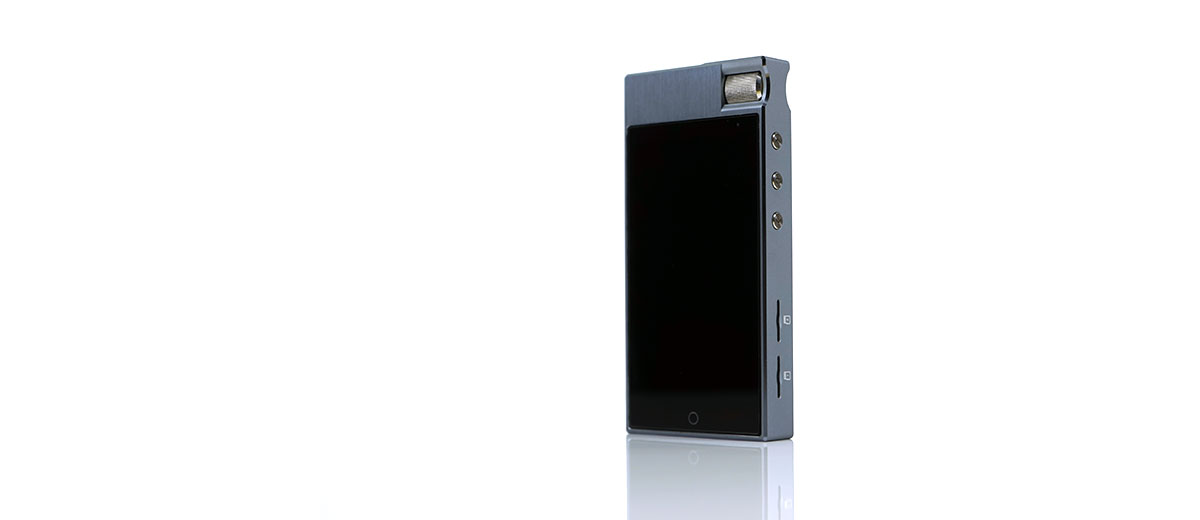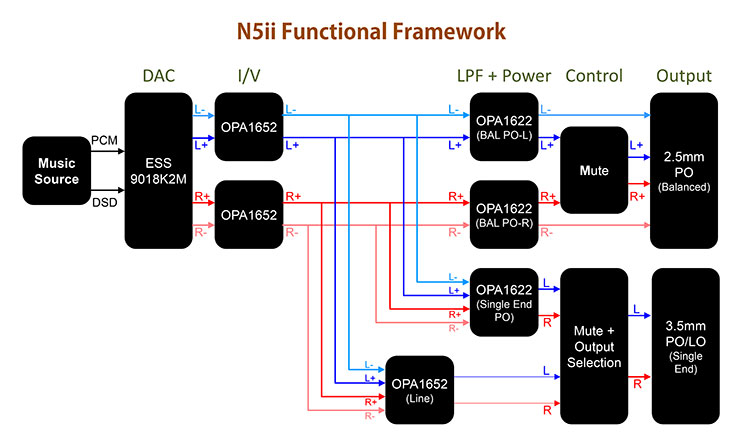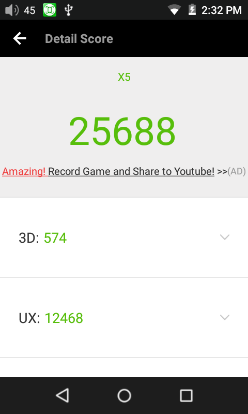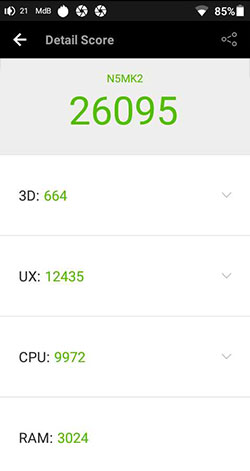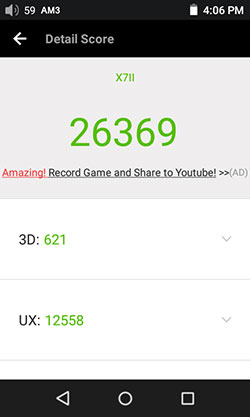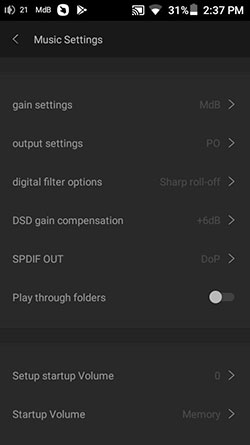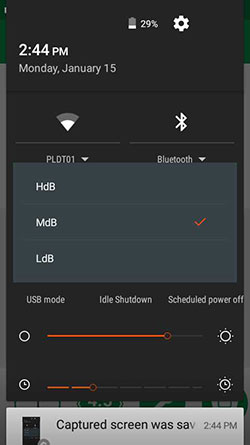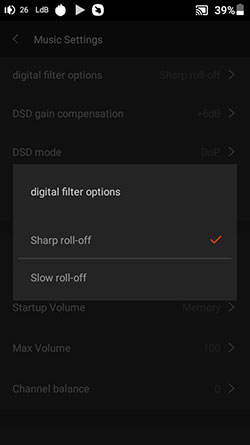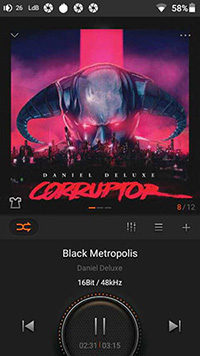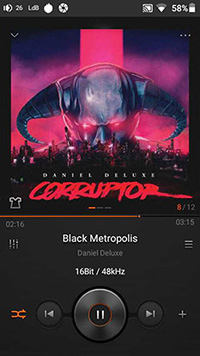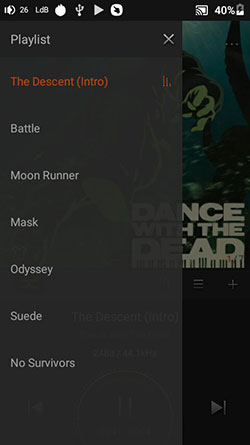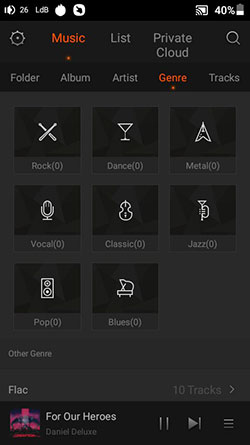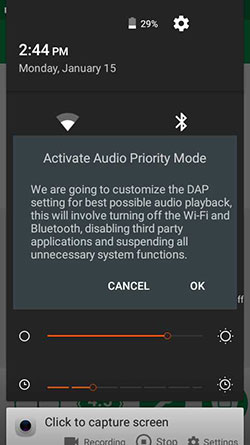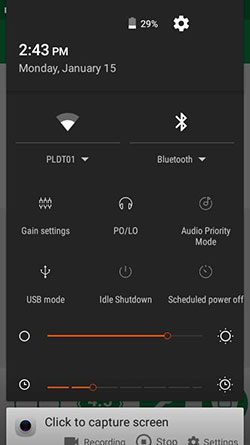Hardware
DAC
Sabre ES9018K2M
Cayin has moved away from their use of AK DAC chips and instead, they have used a single ES9018K2M chip inside the N5ii. Now Sabre chips generally bring with it a preconceived notion of a neutral, details, and clean signature. They also tend to be accused of exhibiting a hard-sounding treble known as “glare”.
Without going into too much detail that is not the case with the N5ii. The implementation and the amp staging used have negated the reference board Sabre sound and instead brought it closer to the Cayin house sound.
Reasoning Factors
It also brings in a clearer distinction from the cheaper AK-infused N3. The N3 did use the same chipset as the i5 which personally I thought sounded great but could muddy the waters in terms of the value pitch between the two differently priced models.
Now some may say the ES9018K2M is an old chip. However, that does not negate its capability. It may not be ES9028PRO level but then again, most DAPs using the ES9028PRO are 2-3 times more expensive such as the FiiO X7ii and the iBasso DX200.
It is also specifically designed to be efficient on both the CPU and power drain which is ideal for the N5ii which carries a smaller battery than the older i5.
Superior Numbers
Cayin has also been able to bring in some of the more competitive features of the ES9018K2M chip-set such as a superior dynamic range (116db vs 108db), SN ratio, (116db vs 108db), and THD+N (0.002% vs 0.005%) over the AK4490EQ.
Decoding Capability
The decoding capability of the N5ii is better than the i5 also as a result of moving to the ES9018K2M chip-set. Previously on the i5 decoding maxed out at DSD128 and 384 kHz/32bit depending on the codec in use (example used is PCM). Pretty good numbers back then. Now the N5ii can stretch up to DSD256 as well as 64Bit/384kHz PCM decoding and directly read SACD ISO’s. That is a good step up.
Amp
Independent Amplification
The amp design of the N5ii is excellent and a much-improved framework over the i5 with the introduction of a balanced and unbalanced output. What’s more, both are independent circuits so they are not feeding off each other in a similar manner to the X5iii’s design.
The N5ii has been designed with no less than 3 OPA1622 chips engineered independently for the N5ii’s LPF, balanced 2.5mm, and unbalanced 3.5mm output.
Better Output Signal
They have also stuck with the previous i5 OPA1652 chipset for line out and I/V from the Sabre DAC. However, the performance figures of the line out are higher than the older i5 implementation. One could summarize that this is a direct benefit of switching to higher-performing Sabre DACs. A better quality of analog signal output to work with makes life a lot easier.
More Flexible Power
Output power on the N5ii is now much more flexible than the i5 and better suited to today’s multi-BA efficient IEMs. The stock 3.5mm output rating of the i5 was higher at 190mW. Some might argue that this was too high for a lot of IEMs. The N5ii rectifies this with a lower unbalanced output power rating of 150mW into a 32Ω combined with lower software-controlled gain settings.
In case you think that is too low the balanced numbers are actually much higher than the i5 at 250mW into 32Ω. This, combined with 3 levels of gain originally seen on the N3 make the N5ii one of the most matchable portable devices out there in terms of amping.
Performance Benchmarking
SOC
The N5ii uses a quad-core ARMv7 processor, the Rockchip RK3188 with 1GB of RAM. There has been a bit of a “hoo-hah” on the speed and performance of the RK3188 as not being ideal in this day and age.
The RK3188 is still a fairly fast ARM SoC primarily designed for tablets so a smaller touchscreen DAP such as the N5ii will present no real 3rd party app issues. Though it has been out since as early as 2014 benchmarks put this chipset around the 14,000- to 18,000-point mark in AnTuTu and slightly superior to the well-respected Tegra 3.
Considering the difficulty in acquiring solutions providers for small-scale niche sectors such as audiophile DAPs, Cayin feel that this type of chip, combined with 1GB is likely to be the default viable format for DAPs such as the N5ii at this price point.
Antutu Results
Look around and you will see the RK3188 still being used by other manufacturers for their OS such as FiiO with the X5iii and even their flagship X7ii though there is an additional 2GB given the higher price point.
Mind you that does not mean it is blazing fast but by no means handicapped. Our Antutu results for the N5ii were excellent in the context of the competition.
Vs FiiO X5iii
With only a 400-point difference in favor of the N5ii, you could argue that both the X5iii and N5ii have more or less the same level of CPU/GUI performance. Unsurprising really when you consider that both use the same RK3188 chip, 1Gb of RAM, MAIL-400MP GUI, and Android 5.1.
Having said that, the RAM performance of the N5ii is 13% faster than the X5iii in our test results. Apologies our screenshot did not capture it but the score was 2684 for the X5iii RAM.
I can only presume the flavor of the RAM used by FiiO in the X5iii may not be as snappy as the N5ii. Certainly, in our day and daily use, the N5ii did feel a little faster.
Vs i5
I was unable to find a screenshot program that worked successfully with Android KitKat 4.4 and i5’s button configuration. Just as well because the N5ii is light years ahead in terms of its Antutu results. The i5 scored just 14254 overall with the following breakdown:
- 3D: 464
- UX: 4257
- CPU: 7107
- RAM: 2426
The N5ii is superior to the i5 on all scores with almost double the overall score. The N5ii is both faster and more user-friendly as well as being more capable in terms of CPU responsiveness and 3D capability from its Quad-core Mali 400MP4 GPU.
Vs FiiO X7ii
Despite its flagship status, the CPU of the X7ii is actually the same RK3188 chip as the N5ii. Our Antutu results showed very marginal differences in all the scores except RAM where the X7ii edges ahead due to the 2GB of RAM as opposed to the N5ii 1GB.
Again, our screenshot didn’t cover the final part which was 3074 for the X7ii. That is not a huge margin, by the way, just 50 points more which goes to show additional RAM on this processor delivers only marginal operational enhancements.
2GB will only come into play if you require higher buffering rates for streaming hi-res files from DLNA or cloud services and for that the X7ii will show better performance rates.
Vs HiBy Music R6
I threw in the R6 to show more of how RAM is symbiotic with the GUI and processor in terms of performance rather than belittle the N5ii.
You have to remember the R6 is a $649 SRP device and double the value of the N5ii. It slays everything though in terms of pure operational performance. Perhaps the fastest DAP on the market today.
The 3GB RAM here has a much greater Antutu score contextually to the mere 50-point gap between the 2GB X7ii and the 1GB N5ii because of the superior processor, the Qualcomm Snapdragon 425.
You can throw as much RAM at something as you like but the diminishing returns will become apparent if you are using the same CPU. The key benefit of 2Gb comes more into play for streaming and buffer rates which the X77ii has an edge and the R6 has a big edge. The X5iii at the same price point and 1GB loses that edge.
Software
Platform
The N5ii uses an Android platform, but like the i5 before it, the Android is not vanilla in application. In fact, it is heavily skinned to switch the bias away from seeing it as an Android device to a music player that uses Android. This is in stark contrast to FiiO and iBasso who offer a very open platform with their own app for music playing.
However, the N5ii, like the i5, is much more open in its skinning than The Bit’s Opus range or AK. You can access 3rd party apps and use them and the back-end is all Android in terms of environmental controls.
Android on the N5ii is also upgraded from 4.4 KitKat to 5.1 Lollipop. As Android versions go it is a bit far from the soon-to-be-released 8.0 Oreo but as far as media players go it is about 1 level behind the latest v6.0 from HiBy Music and iBasso.
Technically, Cayin cannot go further than 5.1 anyhow as the RK3188 has no Android 6.0 capability so this is as good as it gets for these chipsets.
Google Integration
The N5ii comes with Google Play out of the box so you can download and use pretty much anything that is compatible with Android 5.1.
Just note due to the lack of a volume button, (dial) some apps that require the use of it may not work. For instance, a screenshot app that requires power and volume in a combo will not work on the N5ii, you will need a touch version. Little things like that to watch out for.
You will find all your Google services and apps inside the main skin menu under 3rd party applications. Apps such as Hi-Fi Cast and Spotify worked without any issues in terms of loading up and delivering basic services. Apps such as BubbleUPnP were much slower and prone to crashing from time to time but will work so long as you do not rush it.
HiBy Integration
If you are coming from the i5 or even the HiBy Music Android app then you will be very familiar with the N5ii OS layout as it is more or less identical to the i5’s UI.
Cayin has tweaked it here and there to bring it up to speed and to better display the newer features not found on the i5 but otherwise, you should get into this pretty quickly. If you want an in-depth reference to this core OS then you can read our i5 review here.
The focus of the N5ii is primarily on audio playback. The HiBy skin is focused on that first and foremost. Whilst apps are available you do have to make a conscious decision to navigate to them and use them. Out of sight, out of mind in a way.
As such the OS is split into 3 distinct areas; media management and playback(including music settings), Apps management and use, and the usual Android environmental or general settings area.
Harmonious Home
The home screen also pushes up LAN services under a dedicated Private cloud setting and does away with the previous Dropbox option on the home screen.
This frees up an additional information box to show storage capacity for the two TF card slots as well as introduce a new OTG box in the bottom right. The four boxes now feel much more harmonious in terms of physical storage space reporting.
HiBy OS Settings
As with all HiBy OS platforms, the N5ii Music management is front and center as the bootup home screen. To access the Music settings it is the same swipe right process from the i5 or press the top left icon.
Cayin has changed the top-left little head icon from the i5 to denote the music settings area. It is now a settings cog wheel.
Why? Well, the first major tweak on the N5ii from the older i5 is the lack of user login functionality. You can no longer log in using your HiBy profile from your smartphone or even your i5 profile. All settings thus are fixed or changeable only through firmware updates.
There are also no plug-in options to add additional tweaks from the HiBy servers and the bottom touch controls lack the back arrow and multi-app window chooser which hampers the navigation for me.
You do however get a much wider range of menu options than previously available on the i5. Additional choices include smart cleaning (a feature of 5.1), download management, and the ability to schedule when to power down the N5ii.
Music Settings Enhancement
Flexible Gain
Inside the HiBy Music settings, you have a few additional and very welcome enhancements. The gain setting now has 3 levels as opposed to the i5’s two. The settings are low, medium, and high. The i5’s old settings were just low and high. The medium gain of the N5ii is equivalent to the low gain of the i5.
This is a feature first introduced in the N3 entry-level DAP and the new low gain setting was perfect for sensitive IEMs. This will introduce a level of silence on the N5ii with sensitive IEMs not possible on the older N5 or the i5.
Reduced Digital Filters
The second change is the digital filter selection available on the N5ii. Previously on the i5, you had 5 filter choices using the AK4490EQ chipset. This has now been reduced to just two, sharp roll-off and slow roll-off. Cayin content that 5 choices are not necessary for the N5ii and that these two are the only filters on the ES9018K2m with real audible effects.
Apart from the change of SPDIF out to DSD out for DoP and D2P modes, everything else in the music settings remains unchanged from the i5 in terms of available options.
Playback Enhancement
There are a few enhancements on the N5ii playback screen also. Mostly they are cosmetic but welcome nonetheless and serve to increase the ease of use of the N5ii during playback.
Playback Themes
The first is a tiny blink and you might miss it “t-shirt” icon on the playback screen just in the far-left corner of the album art window. By pressing this you can change the playback GUI below the album art to 3 different layouts.
I was a little critical of the incomplete circular play and time control button of the original i5. I felt it a little fiddly for control purposes compared to the original HiBy Music app full circle so I am delighted Cayin has listened and offered different formats.
My own personal favorite is the 2nd themed layout with the smaller disc playback button. It feels aesthetically correct compared to the other two options.
Playback Order
This is a relatively minor one but when you compare it to the i5 setup it does look a lot tidier. Previously the order of play picker on the i5 (random, repeat, etc) was layered over an ill-fitting oblong graphic. You had to swipe side to side on the oblong are to choose your desired playback order. It was a little messy in execution.
Now the N5ii has a smaller oblong area with a single icon denoting the playback order chosen. you now press on it to change the desired order option rather than swipe. It is more linear, granted, but it is much cleaner looking.
Song Listing
The “+” button on the N5ii playback screen feels more ‘complete’ now and definitely more user-friendly. Before on the i5 when you press it the folder or album list of songs would pop up over the playback screen.
From there you can choose to change track, delete, or check its properties. Getting out of that screen took you somewhere completely different. A workflow faux pas of sorts.
Now the list is a half screen and you can still select which song you want but after you can simply “x” out back to the playback screen. If you want to look at song info or delete you have the 3-dot option on the top right to do that. This is much cleaner and more user-friendly.
Media Management
Scanning
The N5ii’s tagging management system is excellent in terms of accuracy and speed. 800 MP3 tracks loaded in about 10 seconds or less and all were properly tagged with artist, album and song references and all had the correct cover art. Scanning was marginally faster than the i5 though accuracy was more or less the same.
Sound Quality Tagging
One thing I did note in the media compilation of the N5ii is the sound quality tagging abbreviation on the individual songs has now changed. Previously on the i5 and HiBy Music apps, you would get a color-coded tag such as SQ or LQ stating the resolution of the file you are about to play.
The new version of the OS on the N5ii no longer does that, instead, you have discs using the same color legend as before. Slightly more confusing if you are not aware of the previous sequence of colors.
Genre Ordering
The N5ii still has that flat genre song list problem that is inherent in all HiBy OS apps and skins. I am not a fan of it. Basically, it is genre>song title and nothing in between.
That is fine if you have like 10 songs or one album but a nightmare if you have 800 or so under the same genre. I simply do not understand why HiBy insisted on that flat ordering when Apple showed the way 15 years ago by including artist and album drill-downs.
Audio Priority Mode
Tucked away in the drop-down menu of the main Android environmental settings Cayin has inserted what they call an audio priority mode. This is a very clever implementation of one of the key features of Android 5.1, the ability to bypass the sampling limitations inherent in the OS.
However, outside of the R6’s innovative default bypassing architecture on Android 6, other manufacturers have implemented bypassing on 5.1 through the use of dedicated booting into “pure modes”.
Companies such as FiiO and iBasso give you the option of booting into a dedicated audio mode with their own UI. It is rather hit-and-miss, Mango being the worst offender in my opinion.
The N5ii’s audio priority mode is a far more elegant solution. Instead of rebooting into a new dedicated OS, it simply warns that certain Android features and all apps will be shut down or disabled once activated. Now you have the same ability to bypass the sampling limitations of Android without ever having to reboot.
Networking Features
Private Cloud
Cloud features have been given more prominence in the N5ii compared to the i5. Having said that the previous Dropbox link feature from the i5 has now gone on the N5ii. I guess it was not that popular.
Instead, they have retained the LAN feature which is activated once you have established a WiFi connection with your local network.
Once activated it will automatically search for any network servers such as oShare on Windows or Universal Media Server. How compatible it will be will depend entirely on your software service from your PC and the size of the media library you are sharing.
Sometimes I found the folder size way too big to share via the N5ii built-in service and had to use 3rd part Android UPnP services to get going.
3rd Party Apps
DLNA/UPnP
Third Party services such as BubbleUPnP were superb on the N5ii and I would highly advise looking at this app if you are intent on streaming via LAN. I would advise making sure you don’t push it too hard as it is quite resource intensive. I had a few initial crashes until I learned not to button mash too quickly.
Once you pace yourself it works really well. Within minutes of installing I had it interfacing with Universal Media Server on my PC via WiFi and streaming 16BIT/44.1k and 24BIT/96k lossless without an iota of stuttering.
If you also happen to be thinking of piggybacking a Poly-infused Chord Mojo, BubbleUPnP will pick that one up with no issues also using the Poly’s own generated Hotspot.
External Streaming
FYI TIDAL is not available in our region so I can’t comment on its performance but I am told currently there is no option to specify the download path for their files.
For Spotify, however, it was plain sailing including playing at an extreme quality and downloading features. I didn’t experience any crashes or buffering issues and was quite happily able to play downloaded songs offline in a matter of minutes.
Take note you can also determine the download path for apps generally to either the onboard memory or one of the two card slots via the Music settings menu which will go some way to satisfy those concerned about the 32Gb storage and downloading heavy-duty apps.
Bluetooth
Cayin has downplayed Bluetooth features a little on the N5ii compared to how much hype it got on the N3. I would assume due to the rather tame inclusion of a BT4.0 capable receiver with no aptX capability and no additional HiBy Link or bi-directional functionality.
That is a shame. I can live without HiBy Link considering the WiFi and streaming 3rd party apps are rather good but the lack of aptX means it is not on par with equivalent mid-range devices such as the X5iii.
Click on page 3 below for Sound Impressions & Comparisons




